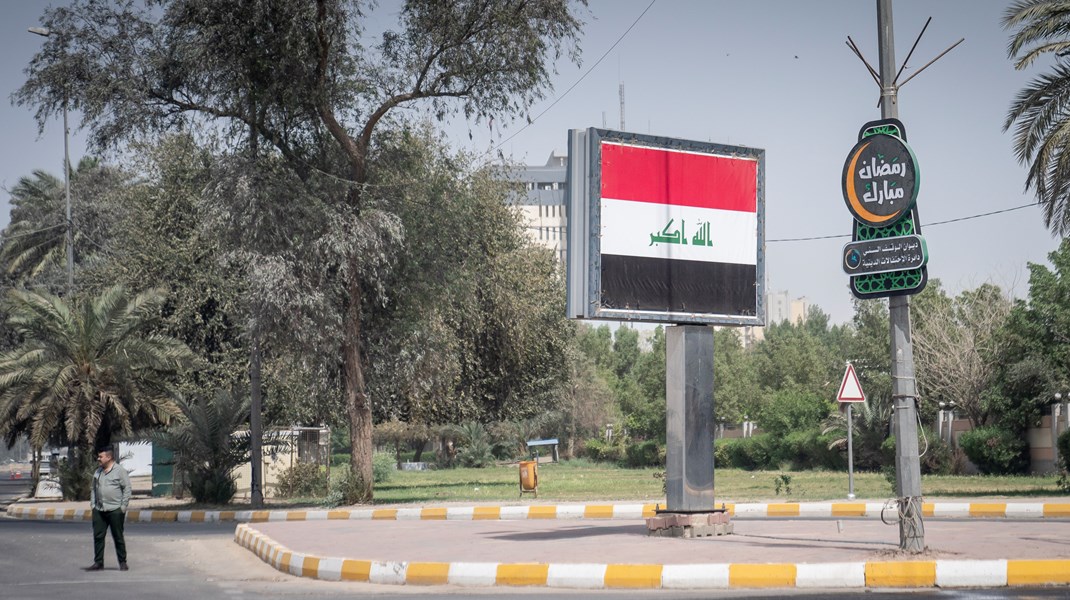2018 HNO seeks support for 13 million people across Syria
Entering the seventh year of the crisis, the scale, severity, and complexity of needs across Syria remain overwhelming. Some 13.1 million people in Syria require humanitarian assistance. Of these, 5.6 million people are in acute need due to a convergence of vulnerabilities resulting from displacement, exposure to hostilities, and limited access to basic goods and services. Conflict continues to be the principal driver of humanitarian needs, with the civilian population in many parts of the country exposed to significant protection risks which threaten life, dignity and wellbeing on a daily basis.
Despite some reduction in the level of hostilities in certain parts of the country, notably through some of the de-escalation agreements (for more information on the specific deescalation agreements/areas, please refer to p.34), and a reduction in the number of UN-declared besieged locations, sustained or increased violence in many other areas has affected the lives of countless civilians. In 2017, people in Syria continued to bear the brunt of the hostilities in the absence of a political solution, with sustained violence contributing to the world’s largest displacement crisis. Similar to last year, some 1.8 million population movements occurred in the first nine months of the year alone, with many people believed to have been displaced multiple times.
Of the 5.5 million Syrian refugees worldwide, most of whom remain in neighboring countries, a very limited number have returned to Syria.
In 2017, an estimated 721,647 people returned to their areas of origin.
While the number of self-organized spontaneous returns has slightly increased from 2016 levels during the first nine months of 2017 (20 per cent), the overall conditions for safe, dignified and sustainable returns are not yet in place in many parts of the country.
Against the disruption caused by prolonged hostilities and extensive displacement, access to services as well as livelihood opportunities remain scarce. People’s ability to cope is therefore strained and ultimately inhibits their ability to meet basic needs.
HUMANITARIAN NEEDS
1 Survival needs among the most vulnerable
Within the overall 13.1 million people in need, and notwithstanding individual vulnerabilities related to age, gender, disability and socioeconomic status, there are 5.6 million facing particularly acute needs. Amongst these, six population groups are deemed most vulnerable due to exposure to risk factors such as besiegement, hostilities, displacement and limited access to basic goods and services.
There are some 2.98 million people living in hard-to-reach areas, including 419,000 in UN-declared besieged areas. This entails a reduction of some 1.9 million people living in hard-to-reach areas over the last year. Although there has been increased access to many areas in the northeast of Syria, the needs of people in UN-declared besieged and hard-to-reach areas continue to be exceptionally severe due to arbitrary restrictions on the freedom of movement of the civilian population; the inability to access basic commodities, services or humanitarian assistance; physical insecurity; and persistent challenges to deliver humanitarian assistance. At the same time, hostilities continued to fuel large-scale displacement in Syria, at an average rate of 6,550 displaced each day. Those people newly displaced as well as some 750,000 people living in last resort sites face particularly acute needs due to a convergence of humanitarian risk factors. Similar levels of exposure to protection risks and challenges in accessing basic services are also faced by overburdened communities, spontaneous returnees and people living in areas with high intensity conflict, with millions across Syria affected.
Civilians in Syria continue to face an ongoing protection crisis. Amid active hostilities in many parts of the country, humanitarian actors remain concerned by the high levels of civilian casualties that continue to be reported and point to violations of international humanitarian law (IHL) and international human rights law (IHRL), including the prohibition on launching indiscriminate attacks and of the principles of proportionality and precaution.
2 Protection needs of civilians
Civilians continue to be exposed to the effects of explosive hazards in densely populated urban areas, with the Protection sector estimating that up to 8.2 million people are exposed to explosive hazards. Indiscriminate attacks on densely populated areas, resulting in the destruction of civilian infrastructure, particularly affected health facilities, schools, water networks, markets and places of worship, continue. The Syria Monitoring and Reporting Mechanism (MRM4Syria) on grave violations against children in situations of armed conflict verified 26 attacks on schools, children and/or teachers/ education, while the Health sector reported up to 107 attacks affecting health workers and facilities in the first half of 2017. Throughout the year, overall vulnerabilities continue to deepen, disproportionately affecting children.
Child recruitment is a particular concern, with 18 per cent of 300 verified cases (of which 289 involved boys) involving children under the age of 15 - with some as young as 12 - many of whom are reported to have engaged in active combat roles. In a context where reliance on humanitarian assistance and the adoption of harmful coping mechanisms remains high, people’s needs are exacerbated by risk factors such as the lack/loss of civil documentation, discrimination and attacks affecting humanitarian personnel, which prevent them from accessing humanitarian assistance.
3 Livelihoods and essential basic services
Large-scale population movements; the widespread destruction and contamination of agriculture related infrastructure and value chains such as markets and bakeries; depletion of productive assets and savings, increasing debt; and limited economic opportunities have all contributed to socioeconomic hardship and the disruption of livelihoods. This has led to high levels of poverty across Syria, with 69 per cent of the population estimated to be living in extreme poverty. As a result, the coping capacity of many people in the most affected communities in Syria has been nearly exhausted. Households are resorting to harmful coping strategies that disproportionately affect the most vulnerable segments of the population, specifically children, youth and adolescents.
These mechanisms include cutting back food consumption, spending savings and accumulating debt. Such coping mechanisms are not only negative and unsustainable but, once exhausted, prompt people to resort to increasingly exploitative and hazardous activities such as child labor and recruitment, early marriage, and engagement with armed groups. Increased efforts to support the ability of households and communities to withstand current and future shocks are therefore essential.
IMPACT OF THE CRISIS
The humanitarian impact of the Syria crisis continues to reverberate across the country and the wider region. Most immediately, the crisis has left millions of people facing a daily struggle to survive amidst pervasive threats to their lives, security, well-being, and dignity. These people are caught in a protection crisis, defined by indiscriminate, disproportional and unrestrained attacks that inflicts extensive hardship and destruction upon the civilian population. Various forms of violence permeate daily life, particularly affecting women and children. At the same time, prolonged conflict and widespread displacement continue to tear apart the social and economic fabric of Syria, compounding immediate suffering and compromising Syria’s long-term future.
Factors including exposure to hostilities, widespread displacement, the destruction of livelihoods, as well as the deterioration of basic services and institutions have left an estimated 13.1 million people, or seven out of ten people in Syria, in need of some form of humanitarian assistance. Of these, some 5.6 million people are estimated to be in acute need.
Ongoing hostilities and violations of IHL and IHRL
Hostilities remain the principal driver of human suffering in Syria, presenting a direct threat to human life in many parts of the country and frequently preventing civilians from receiving much needed life-saving humanitarian assistance. At the same time there has been a reduction in violence in some areas, particularly where de-escalation areas (DEAs) have been established or where local agreements* have been reached.
The impact of the four DEAs on civilians has been mixed. For instance, in southern Syria, since the ceasefire entered into effect in July, the reported reduction in the level of hostilities has been significant; on the other hand, in the Idleb and northwestern Syria DEA, the reported level of hostilities initially decreased, but increased in September, particularly through airstrikes in which at least 149 civilians lost their lives and medical facilities were hit. Since mid-October, an intensification in shelling and fighting in the East Ghouta DEA has been reported, as well as increased shelling in Damascus city.
In 2017, the scope and intensity of hostilities in densely populated urban areas have been striking, particularly in areas such as Ar-Raqqa city and Deir-ez-Zor city. The high level of civilian casualties remains a strong indication of violations of the prohibition on launching indiscriminate attacks and of the principles of proportionality and precaution.
The destruction of life-sustaining civilian infrastructure and services such as water, sanitation and electricity systems, as well as attacks affecting hospitals, schools, housing land and property have continued to undermine support structures in urban and rural areas, ultimately endangering civilian lives and hampering the return of the displaced populations after the cessation of hostilities. In the first half of 2017, the Health sector reported a 25 per cent increase in attacks against health facilities as compared to the same period in 2016, with attacks on health facilities numbering approximately 20 per month between January and April, or one attack every 36 hours. Although the number of verified attacks on schools in the first half of 2017 is less than fifty per cent of those verified in the first half of 2016, the trend of attacks remains consistent in terms of the type of attacks and their impact on children.
Attacks resulting in the deaths of humanitarian aid workers and health workers also continued, with at least 17 health workers and 12 NGO workers killed in the first six months of 2017.
Since the start of the conflict, 65 Syrian Arab Red Crescent (SARC) staff members and 21 UN staff members have been killed, while 26 UN staff members have either been detained or are missing.28 Such numbers do not capture the full scale and impact of attacks affecting aid workers, which cannot be systematically measured in many parts of the country.


